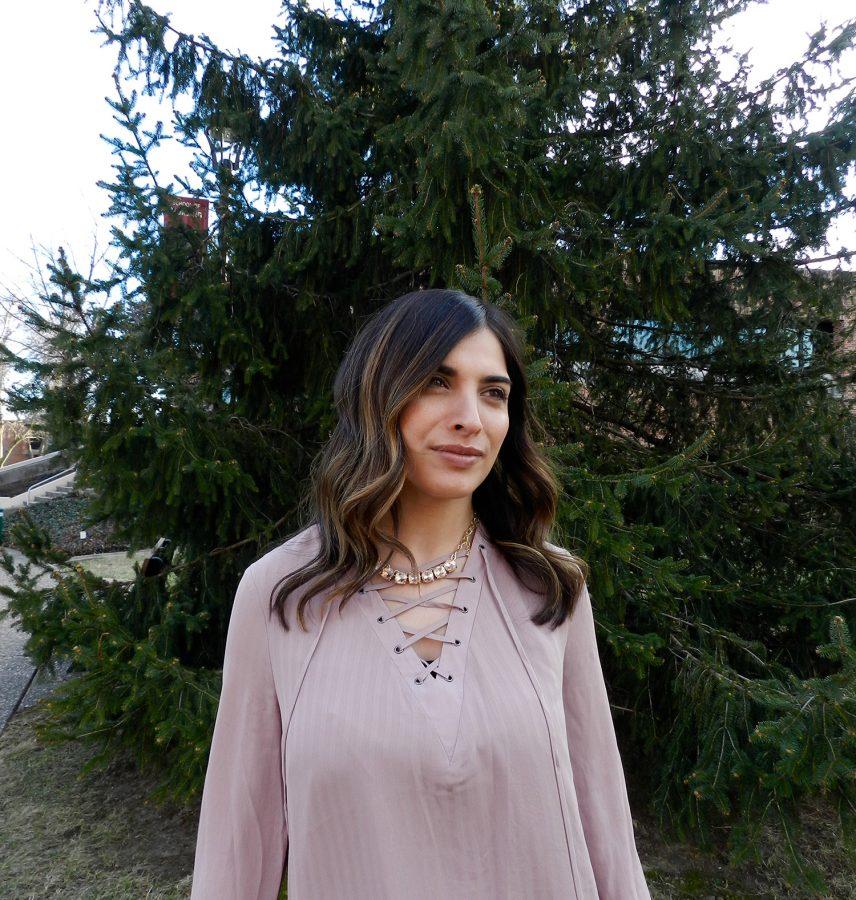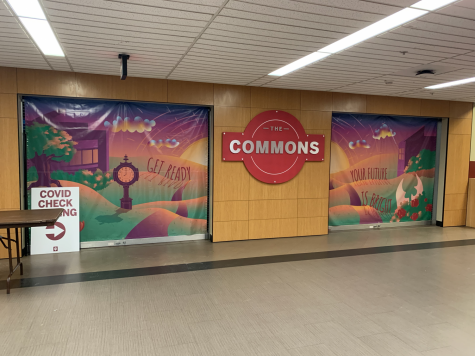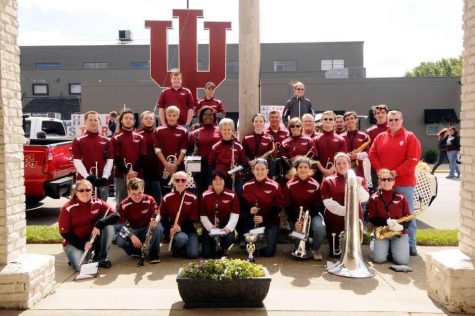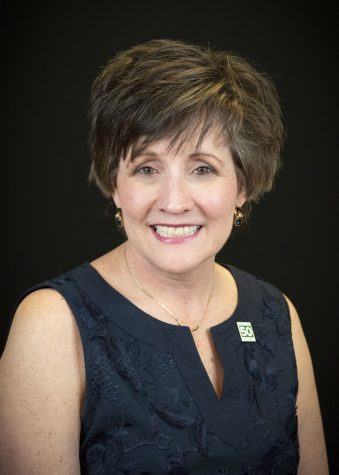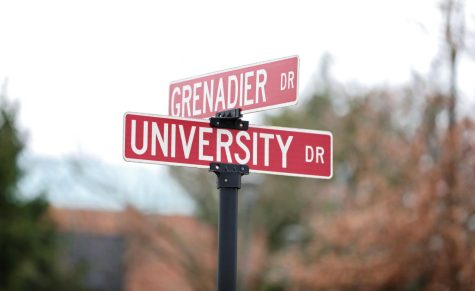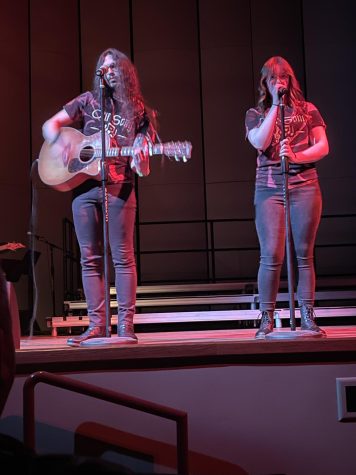Coming to America; A Refugee’s Story
Nancy Casey, once a refugee from the war in Iraq, now a U.S. citizen.
March 5, 2017
The ground rumbles and tea cups come crashing to the floor. Gunshots echo from a distance and the family, who only moments before relaxed in the comfort of their living room, now must take shelter in the hallway of their home. Distant gunfire and yelling can be heard as they huddle together on the floor. Comforted by the embraces of one another, they have nothing to do but wait for silence to tell them they are safe for one more night.
For Nancy Casey, growing up in Iraq was a battle of survival. A walk to school was fraught with fear and uncertainty. Casey said local market places and neighborhoods could be subject to random assaults and often were.
It is no surprise Casey felt a wave of relief when leaving the country of her birth at age 17 to move to America.
Casey is now a sophomore at IU Southeast and is majoring in strategic communication.
Casey reflects on the call that changed her life.
“It was the happiest moment of my life when we received the phone call that we were going to America,” Casey said.
After five years of uncountable interviews, tests and procedures, she claims the exhausting ordeal was worth every second.
When applying for a refugee entry to the United States, individuals must go through many steps.
In the initial assessment alone, only one percent of the global refugee applicants pass on to the next step, according to the obamawhitehouse.archives.gov. High security checks are then conducted by U.S. agencies such as the Department of Homeland Security, FBI, the State Department and National Counterterrorism Center and Intelligence Community. Each individual undergoes extensive interviews, biometric security and medical checks.
According to the article, refugee applicants have to pass a fingerprint recognition, numerous medical screenings and attend cultural orientation classes to determine what area of the United States best suits them. Finally, after a location is chosen and a sponsor has agreed to help them, they are now able to come into the U.S. The whole process can take years to complete.
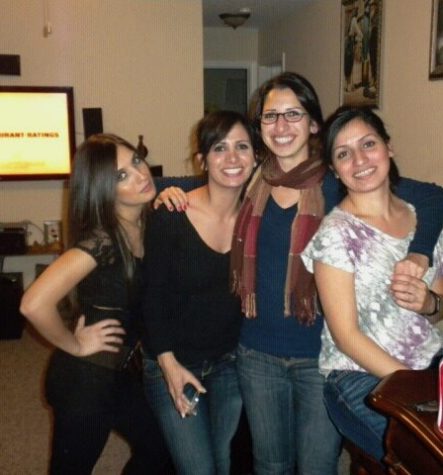
Megan Casey said her sister strives on a daily bases to make the best of life, to work hard and help others however she can.
“Nancy is an ambitious, hardworking young woman,” Megan Casey said.
Casey said their father taught his young daughters to be smart and independent, wanting them to be highly educated rather than just staying home and raising children.
However, Casey said she still had to worry about the social expectations during that transitional period of the refugee application. “No expression of personality was allowed. You could not have polish on your fingernails or any makeup on at all,” Casey said “In those five years, we could have easily been killed but we respected and obeyed the laws.”
In 2009, Casey said she and her three sisters came to the U.S. on refugee visas. They were told their sponsor was from Kentucky and that is where they would be living.
“Kentucky?” Casey joked. “Is that even in the United States? You always hear of the big cities like New York and Chicago, but not Kentucky.”
Arriving in Louisville, they were greeted by Kentucky Refugee Ministries, who provided them with rent and
assistance. Casey said she had never before experienced the kindness that KRM showed her.
“I was amazed that people who didn’t even know you, could take the time every day to make sure that you got to school and work without anything in return,” Casey said.
Casey said it was difficult adjusting to a new country. Even with the warm welcome of the U.S., she said she still found herself looking over her shoulder at times, unable to shake the anxiety she still carried from the war she left behind.
Casey said she took classes to learn English and finished her high school education at Atherton High School in Louisville. She then landed a job with Humana, where she is currently the coordinator for a department director and will soon be celebrating five years with the company.
Casey said after finishing at Atherton, she enrolled in Jefferson Community and Technical College, where she earned her Associate of Arts degree before transferring to IU Southeast in 2015.
Casey said refugees are eligible to begin the citizenship process after five years of living in the U.S., school and work prevented Casey from starting the process until late 2016. Finally, after eight years of living in America, Casey officially became a U.S. citizen on January 5.
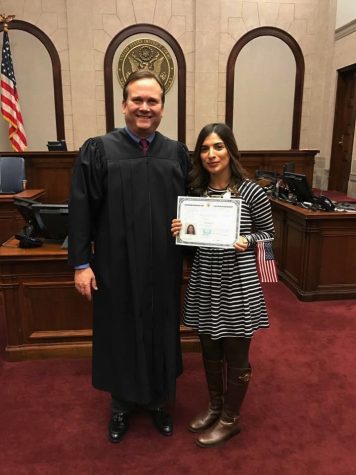
Currently a sophomore at IU Southeast, Casey said she enjoys the close knit community on campus and the connection she has made with fellow students and her professors. Outside of campus she enjoys the freedom of being herself.
“I can wear what I like and color my hair if I choose,” Casey said.
With an interest in cosmetics, Casey said she enjoys working part-time at Sephora and blogging tutorials about fashion and cosmetics on her YouTube channel, Nancy Casey.
When discussing the rising fear of Muslims in the U.S., Casey was understanding.
“I don’t blame people for wanting to keep their home safe,” Casey said. “People ask me all the time what I miss about Iraq and my answer is always, ‘Nothing.’ I do not miss it. I don’t miss feeling afraid and constantly looking over my shoulder. Home is where you feel valued, important and safe. America is my home.”

